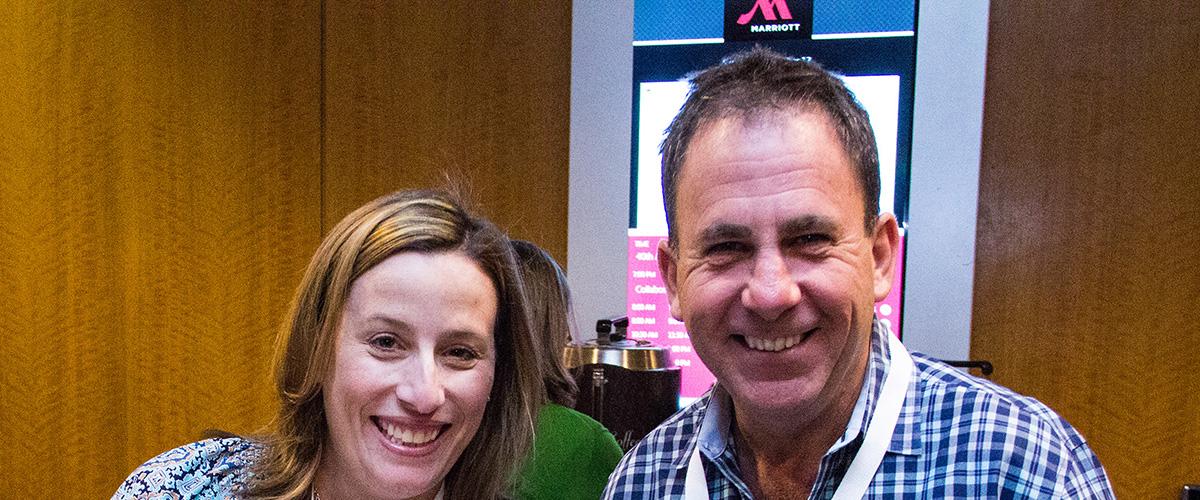Tackling DM from Basic Research through Clinical Care
Tetsuo Ashizawa, MD, better known as "Tee" to colleagues and patients, has focused his career on the search for treatments for myotonic dystrophy (DM). As one of seven primary investigators who will participate in the first clinical trial of a potential treatment for DM1, Dr. Ashizawa may be closer than ever to achieving that goal. Yet in addition to pursuing research with dedication and tenacity, he has also been committed to providing the best possible care to people living with DM. Dr. Ashizawa's engagement in myotonic dystrophy spans basic research, translational science, patient-oriented research and clinical care.
Originally trained in neuromuscular diseases, Dr. Ashizawa first became involved in DM as a basic researcher, working with a team at Baylor College of Medicine to hunt for the DM gene. "There were actually several teams working internationally to find the gene," said Dr. Ashizawa. "Interestingly, in 1992 the various research teams all had the same finding, which was identification of DMPK, the genetic mutation responsible for myotonic dystrophy type 1. It was an exciting time, and that was the beginning of our journey to find treatments and a cure."
Patients Play a Key Role with Researchers
In 1998, as Dr. Ashizawa was expanding his research efforts, he received an email that would broaden his perspective. Shannon Lord, the mother of two boys with juvenile-onset DM1, wanted to make a donation to advance DM research. She provided a grant to Dr. Ashizawa through the Hunter Fund, an account named after her older son and established by Shannon and her husband Larry to support DM research projects. The grant was the start of a long-term friendship between Dr. Ashizawa, Shannon and Larry Lord, and ultimately led to a DM scientific meeting organized by Dr. Ashizawa and including the Lord family. "It was so powerful," said Dr. Ashizawa. "Before this meeting, many in the scientific community only saw DM through a microscope. Now investigators could see and understand the human face of the disease. It was a real morale booster for everyone and provided a great deal of momentum to move our work forward."
By then Dr. Ashizawa had also co-founded the International Myotonic Dystrophy Consortium (IDMC) to bring together scientists and clinicians focusing on DM. Shannon Lord attended the third biennial IDMC meeting in Kyoto in 2001, serving in the role of patient advocate and introducing patient advocacy to the IDMC research community. By the fourth meeting, about one hundred patients and families attended, and the participation of a large number of patients at these international meetings has since become routine. Today, IDMC meetings provide a unique opportunity for global researchers, clinicians and patients to come together; IDMC 10 will be held next June in Paris, France. "Without patient involvement, we wouldn't be able to push forward on the research frontier," Dr. Ashizawa said.
Research Moves Out of the Lab
By 2011, DM science had progressed significantly in the development of potential treatments for DM1. Seven research and clinical institutions around the country are currently preparing to launch the first clinical trial in affected patients to test the efficacy of an antisense oligonucleotide (ASO) therapy, DMPKrx, in people affected by DM1. The University of Florida (UF) will serve as one of these sites, with Dr. Ashizawa as the Primary Investigator for the institution.
Dr. Ashizawa has recently started a project looking at DM1 patient-derived, induced pluripotent stem cells (iPSCs), which can be developed into different cell types needed for research, e.g. muscle, heart, or even brain cells. These cells can help researchers understand how DM affects different body systems and causes disease symptoms. While the clinical use of these cells may be a long way off, iPSCs have a more immediate and critical function as a platform for the screening of compounds to find drugs that have therapeutic potential in DM1. "It's a very exciting time in DM research," Dr. Ashizawa says.
Providing Multidisciplinary Care in the Clinic
In addition to his research projects, Dr. Ashizawa oversees the clinical program at the University of Florida. Patients benefit from a multidisciplinary team of doctors that includes cardiologists, anesthesiologists and geneticists. "We help patients access any clinical trials for which they may be eligible," he says. "And when new treatments become available we are committed to helping our patients access them as soon as possible."
Dr. Ashizawa has published over 190 research papers and 35 book chapters. He is currently Executive Director at the McKnight Brain Institute at UF and Professor and Chair of the Department of Neurology at the UF College of Medicine, and he serves on MDF's Scientific Advisory Committee. With Drs. Maurice Swanson and S.H. Subramony, he has recruited Dr. Laura Ranum to UF and is in the process of recruiting a handful of other key DM investigators to build one of the strongest DM research teams in the world. "We are very hopeful about the research and treatment possibilities on the horizon. We have a distance to go and there are many questions to answer, but we won't stop working," says Dr. Ashizawa. "We are dedicated to our patients and to collaborating with them to find a cure."
12/09/2014

